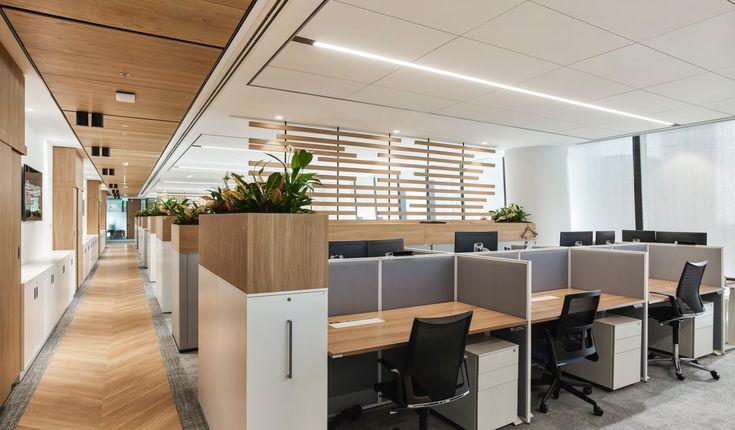Over the past few years, there has been a substantial shift in the way we work. Both coworking and Traditional spaces have their own unique advantages. Businesses come to a decision based on what requirements need to fulfilled and what works best for them.
COWORKING OFFICE SPACES:
Co-working spaces provide shared, adaptable workspaces where people from all backgrounds come together to collaborate or work on their business goals. These areas encourage small enterprises, remote workers, and freelancers to feel more connected, network, and be more productive. Co-working is not only limited to startups and small business owners as large scale MNC’s have also made the jump and are operational in these centers across India.
ADVANTAGES OF CO-WORKING SPACES –
- Networking Opportunities: Co-working spaces offer an ideal environment for networking and cooperation; enabling people to connect with professionals from various industries and discuss ideas. It enlarges your circle and allows your business to gain visibility simultaneously increasing your awareness of others.
- Flexibility: Co-working spaces provide access to value added services like conference rooms, high-speed internet, and office equipment without the need for long-term investments and commitments of a typical lease. With flexible membership options, these locations allow members to scale up or down as per their needs.
- Cost-Effectiveness: Co-working spaces are an inexpensive choice for independent contractors, start-ups, and small enterprises since they remove the need for expensive overhead costs like rent, utilities, and maintenance that come with maintaining a dedicated office.
- Managed Private Workspaces : A variant of co-working spaces, this model offers built to suit offices to their clients secured with access controls, these private dedicated work spaces replicates a traditional office space whilst maintain the benefits of a co-working space provider.
LIMITATIONS OF CO-WORKING SPACES –
- Distractions: Due to their open floor plans and the higher levels of engagement among employees, phone conversations, and multiple events or activities going on all at once, coworking spaces can typically be noisier than other types of workspaces.
- Lack of Privacy: Although co-working spaces foster a sense of community and cooperation, they might not provide enough privacy for delicate conversations or focused work.
- Limited Control: In general, as co-working spaces are shared settings, people may only have a limited amount of control over things like office design, noise level, and cleanliness, which can affect their general comfort and productivity.
- Work culture – Coworking spaces usually tend to be a conglomerate of various businesses, each possessing their own unique work cultures ranging from trendy startups to global MNC’s with standardized policies. These cultures may not be followed by all businesses. Which in turn, may not sit well with all occupants. As an example of these work cultures coming together, some businesses dress code would be formal attire but on the other hand some businesses go for a more casual dress code.

TRADITIONAL OFFICE SPACES
Traditional spaces typically refer to traditional office environments, where employees from the same company work together in a dedicated office setting. Traditional office spaces often consist of private offices, cubicles, or open-plan layouts designed for employees of a single organization. These spaces may have specific amenities tailored to the needs of that organization.
ADVANTAGES OF TRADITIONAL SPACES –
- Team Cohesion: Having all employees working together in the same physical space can promote team cohesion, collaboration, and a sense of belonging. Face-to-face interactions can foster stronger relationships among colleagues and enhance communication.
- Customization: As it’s a Traditional space, business owners can customize the space as per their needs and requirements. It creates uniformity and an identity for them. It allows for more control on what specifics need to be implemented and what needs to be removed.
- Branding and Identity: Traditional office spaces provide opportunities for organizations to express their branding and corporate identity through interior design, signage, and decor. This makes sure their work culture is followed. This can help reinforce company culture and values among employees and visitors.
LIMITATIONS OF TRADITIONAL SPACES –
- Fixed Costs: Traditional office spaces often involve high fixed costs, including rent, utilities, maintenance, and other overhead expenses which may become financially burdensome. Huge investments have to be incurred on buying office furniture & deciding on amenities.
- Restricted Flexibility: Rigid contracts and long-term leases can make traditional office spaces less flexible, making it more difficult for businesses to scale up operations, accept remote work arrangements, or adjust to changing business needs.
- Isolation & Silos: Traditional office designs, like cubicles or offices with locked doors, can make workers feel isolated and separate from one another. Within the company, this may make it more difficult to collaborate, communicate, and share ideas. In terms of business networking,making connections from various business sectors is less likely.
- Commute & accessibility: Traditional office spaces are often located in centralized urban areas, which can result in long commutes and accessibility challenges for employees living in suburban or rural areas. This may impact work-life balance and employee satisfaction.
ON THE RISE – TRADITIONAL OR CO-WORKING SPACE ?
Every type of Traditional or coworking space has advantages and disadvantages. Co-working spaces are excellent venues for networking. They unite professionals from various fields and backgrounds, fostering a collaborative atmosphere where knowledge, abilities, and ideas can be exchanged. This may result in new relationships, collaborations, and commercial prospects.
A Traditional space shows your worth, the company you become. It gives a sense of responsibility and establishes respect. The choice should ultimately be made in accordance with your company’s objectives, financial constraints, and the kind of workspace that will maximize the output and welfare of your employees.
For further more options, Kindly get in touch with us for comparative analysis, budget planning, arranging site visits and taking through you the entire process.
Visit here for More CoWorking Properties and Traditional Offices
Not sure on how much space you require for your office setup? Find out here with our Office Space Calculator
